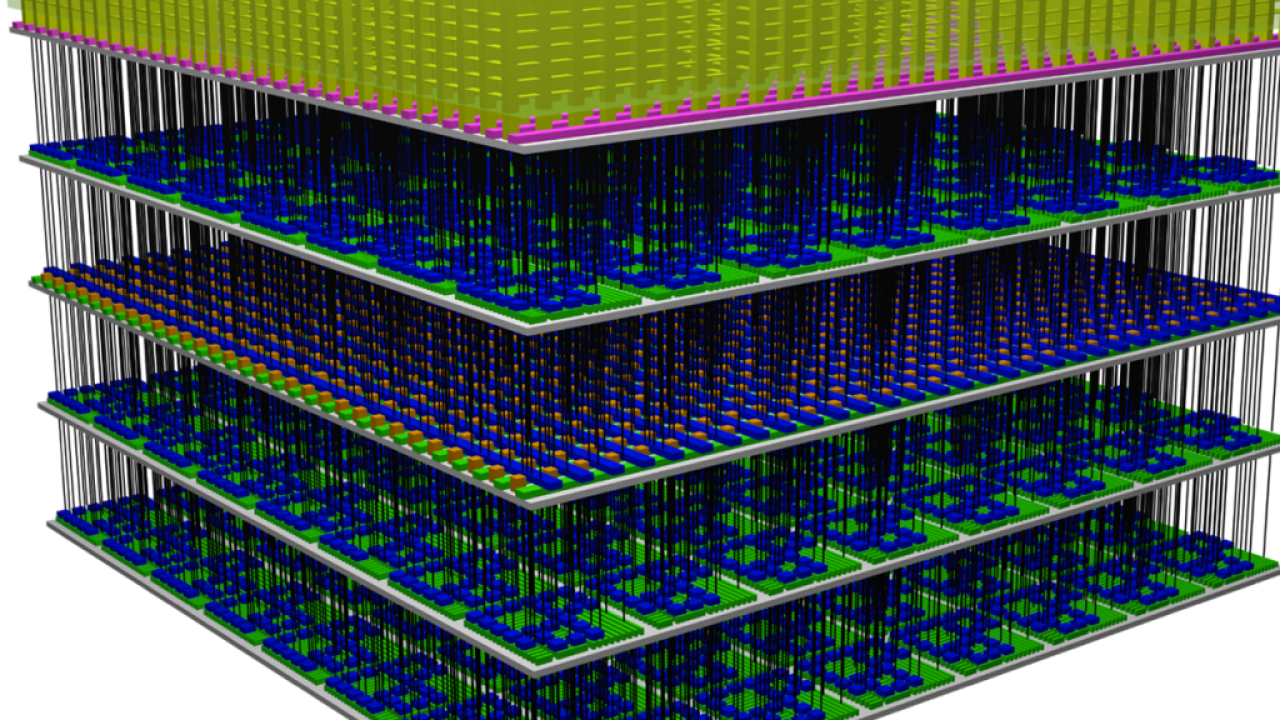UC Davis electrical and computer engineering (ECE) distinguished professor Ben Yoo recently won three grants related to his research into integrated photonics and a fourth related to quantum wrapper networking, which should bring us closer to a quantum Internet.
The first, for $2.4 million from the Intelligence Advanced Research Projects Activity (IARPA) agency, focuses on building silicon electronic photonic integrated circuits in three dimensions to enable artificial intelligence and neuromorphic computing on chip. These circuits should have around 100 times more throughput and 100 times more energy efficiency compared with our current best technology. This technology supports optoelectronic neuromorphic computing, optically reconfigurable computing, and a whole new generation of computing-in-memory hardware architecture. This computing architecture involves both photons and electrons in a 3D Chip to mimic how the human brain works.
Yoo’s second grant, for $1.5 million from the National Science Foundation’s ASCENT program, comes from winning a multidisciplinary team project led by MIT. Yoo’s team will build a photonic-CMOS platform to realize a phase-change reconfigurable optical wavefront synthesis system (PROWESS). This system has metasurfaces made of phase-change materials where their phase transition and refractive index (how fast light travels through the material) are electrothermally adjusted through silicon micro-heaters built on Yoo’s platform. This system can adapt to different computation tasks on the fly and also streamlines the deep machine learning process. PROWESS allows the computer to collect information including light wavelengths, polarization and incident angle (the angle between the beam of light and a line perpendicular to the target) which empowers imaging systems with unprecedented intelligence capabilities.
Quantum networks
Yoo is also one of the six university investigators invited to participate in Intel’s new Research Center on Integrated Photonics for Data Center Interconnect. Yoo’s project is designed to improve the energy efficiency of data centers through creating a new generation of high-density silicon photonic transceivers that can operate robustly from zero to 100 degrees Celsius. He will also pursue co-integration of photonic and electronic integrated circuits with Professor Sam Palermo, Texas A&M University.
In addition, Yoo has secured a Department of Energy grant, together with Prem Kumar of Northwestern University, for $900,000 using Yoo’s new invention called quantum wrapper networking for entanglement management and control in transparent optical quantum networks. A wrapper, in tech speak, is any system that encapsulates another system to make them work together and be compatible. Quantum wrapper networking operates over fiber optic networks and is interoperable and compatible with our current classical networks. It promises to allow seamless upgrades from today’s networks to the quantum networks of the future.
Media Resources
Next Generation Networking and Computer Systems Group
Cristina Deptula is a content specialist at the UC Davis College of Engineering.
